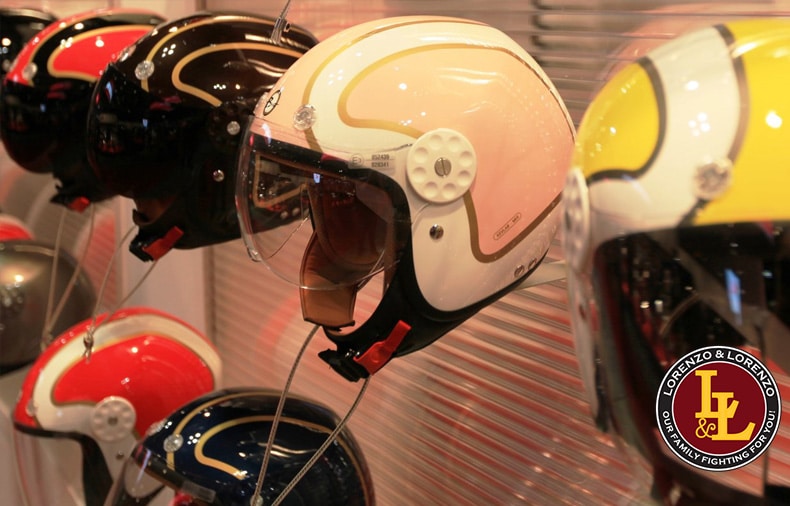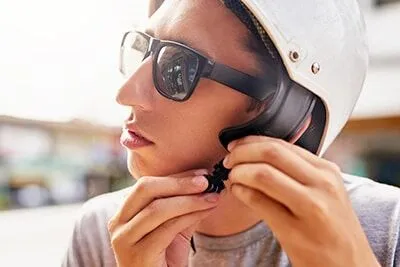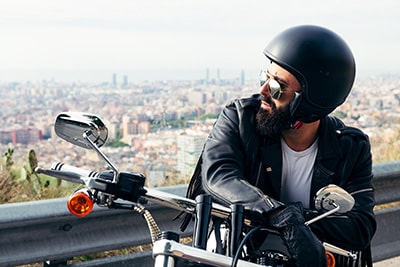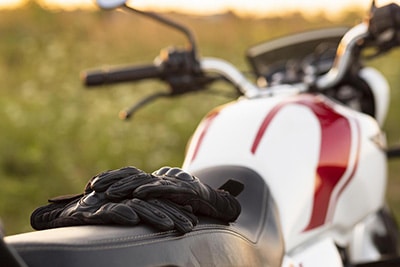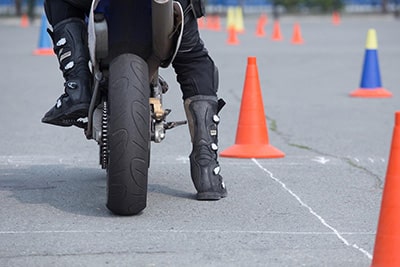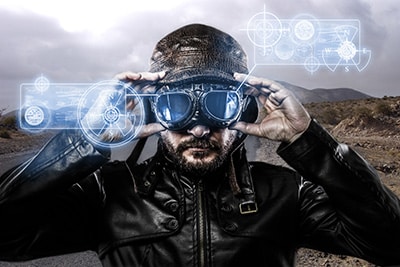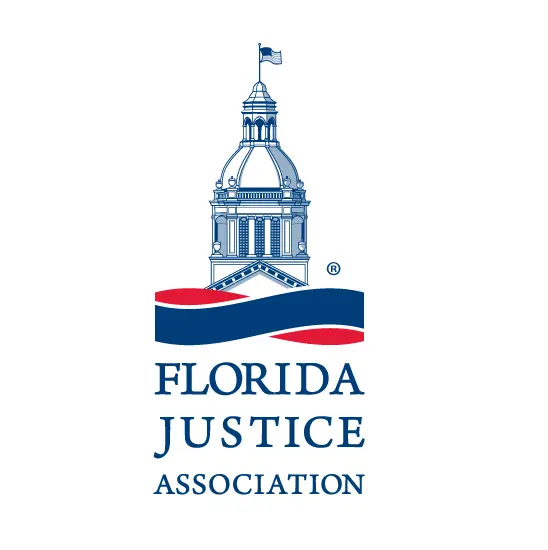Get our top tips to protect yourself on your motorcycle
Modern technology is helping to make driving safer for everyone on the road. Backup cameras and other safety features are helpful for preventing accidents, yet motorcyclists still tend to represent a large portion of traffic accident fatalities every year.
In 2020 alone, 5,579 motorcyclists died in an accident in the U.S.
Although it’s easy to think you won’t ever wind up in these statistics, it’s important to be proactive, and gearing up is one of the easiest things you can do to protect yourself from being the victim of a fatal accident.
What are the most common causes of motorcycle accidents?
Below are some of the most common causes of motorcycle crashes:
- Speeding. While flying down the road at high speeds is a common cause of motorcycle accidents, the largest contributor to collisions is one that is often avoidable.
- Left turns. Almost half of all car and motorcycle collisions occur when the car is making a left turn. Right-of-way laws make it clear that the driver who is turning left should yield to oncoming traffic. Yet, driver distractions, low visibility and speeding can all make it harder for a car to stop when a motorcyclist is moving through the intersection.
- Alcohol. Alcohol also remains a contributing factor to motorcyclist fatalities. Motorcyclists should never get on their bikes if they’ve been drinking, and no one should be behind the wheel of a car when they’re intoxicated. Too often, calling for a sober ride is all it would have taken to prevent someone from dying.
- Hazardous road conditions. Dangerous roads are another leading cause of motorcycle accidents. Loose gravel and other types of road debris are harder for motorcyclists to maneuver their bikes over and around on only 2 wheels.
Single motorcycle accidents are common during times when the road is slick or under construction. Cars are also more likely to hit motorcycles when the road conditions make it harder for them to stop. Plus, all it takes is a little fog or rain to make it even harder for a driver to spot a cyclist riding in their path.
Are you required to wear a helmet on a motorcycle in Florida?
Florida motorcycle safety laws get a little confusing regarding the helmet requirements. On the one hand, the state requires motorcyclists to wear a helmet that meets the Federal Motor Vehicle Safety Standards.
Yet, motorcycle operators who are over the age of 21 can opt out of wearing their half motorcycle helmet if they can demonstrate proof of carrying an insurance policy that covers $10,000 of medical care for potential injuries.
Anyone who is under the age of 21 must wear a helmet, regardless of their insurance coverage. You’ll also want to note that eye protection is also required for motorcyclists under state law.
Why is it so important to wear a helmet on a motorcycle?
There’s no denying the fact that helmets can feel clunky, heavy and sweaty. Yet, protecting your head is critical for preventing traumatic brain injuries (or worse) in an accident.
Wearing a helmet reduces your risk of dying in a motorcycle accident by 69%, which makes putting one on a small sacrifice that can significantly save your life.
Keep in mind that the helmet you wear needs to be safety-approved, and the style can make a big difference. For example, a motorcycle half-helmet will provide less protection compared to a full-face version. But putting any helmet on your head is usually better than going without.
What are the 3 types of motorcycle helmets?
Motorcyclists have their choice of helmets to wear when they’re on the road. Different styles carry varying levels of protection, and the helmet that you choose can also affect your need for other gear.
Knowing the differences between these 3 types of helmets gives you insight into how to pick the right one for your safety.
Half-helmet
A half-shell motorcycle helmet is often referred to as a beanie, and it’s easily recognizable by its design that looks like what you might wear on a bicycle.
Unlike bike helmets, these types are rated for use at higher speed collisions, such as what you might experience on a motorcycle.
However, since there is less coverage for your head, a half helmet tends to be less effective compared to other styles.
Motorcyclists who choose a half-shell style tend to do so out of a desire for comfort or a preference for leaving the ears uncovered for better hearing.
Three-quarter helmet
This type of helmet covers about three-quarters of your head since it comes down over the ears. They are recognized for being able to protect against brain injuries in a little over half of all motorcycle accidents.
Since the three-quarter helmet doesn’t cover your face, you will still need goggles or other face protection.
Full-face helmet
Sportbike riders tend to instantly go for a full-face helmet since the design protects the head from the chin to the top.
Many motorcyclists enjoy having some protection from bugs hitting their faces as they ride. This type of helmet can also reduce your exposure to road noise as you enjoy your drive.
What additional safety gear should motorcyclists have?
On top of a helmet, you’ll find that adding additional gear rounds out your safety plan and protects your entire body from injuries during an accident.
- Gloves. A leather set of gloves serves as an extra layer that protects your hands from road rash.
- Jacket. Choose your jacket based on the weather, but try to choose one made from tough materials that can stand up to rough road surfaces.
- Boots. Riding boots protect your feet from engine burns and guard against road rash.
- Pants. Legs are often the first part of the body to hit the ground during a layover, and pants or chaps help to reduce friction on the skin.
- Goggles. In Florida, eye protection is required, and goggles surround the eyes so that you maintain good vision.
- Bright colors. The brighter, the better is the rule for this one, with fluorescent colors giving you the highest visibility.
- Reflective strips. You can find clothing with reflective strips built in or add them yourself to increase night visibility.
- Helmet camera. A motorcycle camera that fits on your helmet gives the best view along with hands-free recording in the event of an accident.
Other top tips for motorcycle accident prevention
Gearing up is the simplest thing you can do to protect yourself from an accident that could cause serious harm.
On top of that, remember that your goal is to be seen. Go wild with a bold-colored helmet, and remember to use exaggerated hand signals when necessary.
Taking personal responsibility to double-check that your path is clear also helps you to cover for a car driver’s inability to notice you before they proceed through an intersection.
5 Important Motorcycle Safety Tips
When riding your motorcycle, following these safety tips could help you avoid a serious accident.
Riding a motorcycle through Florida is the ultimate way to enjoy the beautiful weather. Motorcycle safety gear can’t always make up for distracted driving, but it can help you get home safely at the end of the day.
Get help from an experienced motorcycle accident attorney
Unfortunately, even when you take all the necessary precautions on your motorcycle, accidents will still happen. And when they do, it’s critical that you have a motorcycle accident attorney on your side to ensure you get maximum compensation for your injuries.

